Fécamp
|
Fécamp
|
 |
| Fécamp from the cliffs |
|
|
Location within Upper Normandy region
|
| Administration |
| Country |
France |
| Region |
Upper Normandy |
| Department |
Seine-Maritime |
| Arrondissement |
Le Havre |
| Canton |
Fécamp |
| Mayor |
Patrick Jeanne
(2001–2008) |
| Statistics |
| Elevation |
0–125 m (0–410 ft)
(avg. 14 m/46 ft) |
| Land area1 |
15.07 km2 (5.82 sq mi) |
| Population2 |
19,914 (2006) |
| - Density |
1,321 /km2 (3,420 /sq mi) |
| INSEE/Postal code |
76259/ 76400 |
| 1 French Land Register data, which excludes lakes, ponds, glaciers > 1 km² (0.386 sq mi or 247 acres) and river estuaries. |
| 2 Population sans doubles comptes: residents of multiple communes (e.g., students and military personnel) only counted once. |
Fécamp is a commune in the Seine-Maritime department in the Haute-Normandie region in northern France.
Geography
Fécamp is situated in the valley of the river Valmont, at the heart of the Pays de Caux, on the Albaster Coast.
History
Origin of the name
According to legend, the trunk of a fig tree carrying the Precious Blood of Christ collected by Joseph of Arimathea was washed ashore on the riverbank at Fécamp in the 1st century. Immediately, a fountain of holy blood gushed from the site and the relic quickly attracted many pilgrims, enhancing the reputation of the city. The name “Fécamp” was artificially connected with this legend by monks: Fici-campus, the camp of the fig tree. Fécamp also is mentioned in 875 under the name Fiscannum and later on in 990 as Fiscannus which stems from the Germanic root fisc (‘Eng – fish’) with an unknown suffix. It used to be the name of the Valmont River.
Pre-history
The prehistoric site, on the high ground inland from the port of Fécamp, reveals human occupation dating back to Neolithic times. Spreading over 21 hectares, surrounded by walls and ditches for a length of nearly 2000 meters, including a praetorian door. Objects recovered range in date from the Neolithic until Roman times..
Roman times
Many items of the Gallo-Roman period have been found locally, particularly coins (including 2 gold Gallic coins found in 1839). A bronze axe, of Celtic design, was unearthed in 1859.
Fécamp was on the ancient road linking up Arques-la-Bataille and Lillebonne with the north of Gaul. The archaeological diggings around the Ducal palace(in the grounds of the present abbey) in 1973-1984 revealed some evidence of the La Tiene Celtic culture and Gallo-Roman works. Two Gallo-Roman cemeteries have also been discovered.
During Roman times, a road linked Fécamp to Étretat, passing through the present-day village of Fond-Pitron. The current D940 follows the original Roman road.
Middle Ages
The Abbey
More from the Middle Ages
- In the 6th century, Saint Leger was exiled to Fécamp.
- In 932, William I of Normandy (Long-Sword) founded the castle that was to be the residence of the Dukes of Normandy up until 1204, after which, the Norman Duchy was integrated within the French royal domain.
The castle was the birthplace of many Norman dukes, including Richard I of Normandy (born 933) and Richard II of Normandy (who died 22 August 1027).
- In 1202, King John of England granted a community system to Fécamp.
- In 1410 : The English razed the town.
- In 1449, Fécamp was freed from English occupation.
- For Fécamp, the Wars of religion finished in July 1593, when Captain de Bois-Rosé rallied the city to Henry IV of France after his conversion to Catholicism.[1]
- It was at Fécamp that Charles II of England landed, in November 1651, soon after the Battle of Worcester, where he had been defeated by Cromwell.
Modern era
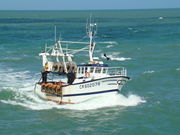
A fishing boat returns to port

Fishing boats return to port
The history of Fécamp has always revolved around the fishing industry and its harbour (first mentioned in the 11th century). The reputation of the salt-herrings of Fécamp was established as early as the 10th century, that of smoked herrings from the thirteenth century. An association of whale fishermen was created in the 11th century. Fishing for cod started commercially in the 16th century, under the impetus of Nicolas Selles, an early shipping magnate. Throughout the 19th century and the early part of the 20th century, Fécamp had an important role as the chief fishing port in France for cod and cod-related fish. This was the case up until the 1970s, when Canada stopped all access to their fishing grounds. First practiced by three-masted sailing ships, Atlantic fishing trips could last more than six months, the time taken to fill the hold with cod, which were salted to preserve them.
The fishing was actually carried out in small boats, carrying only two or three fishermen. Many of these small boats would be lost in the fog and never returned to the ship. As technology evolved, the three-mast boats disappeared, giving way to steamers, then to diesel-engined vessels. These days, only a small fishing fleet survives, restricted to fishing around coastal waters. In the harbour, pleasure-boats have taken the place of all but a few fishing-boats.
- In the 19th century, the recipe for Benedictine liqueur was “rediscovered” by Alexandre Legrand. The Palais Benedictine now houses a visitors’ centre, which shows how the liqueur is made.
Heraldry
|
|
The arms of Fécamp are blazoned :
Vert, 3 tents argent open vert, and on a chief azure, a falcon ?rising? maintaining a cornucopia, from which pours grain over the field, argent.
|
Education
Fécamp has four high schools:
- Anita Conti high school
- Providence high school, a private high school situated in the city centre.
- Descartes professional high school, situated in the school complex at St. Jacques
- Guy de Maupassant high school, also at St. Jacques
Civil architecture
- 12th – 14th century ruins of the ducal former palace enclosed in the abbey grounds – two towers and a wall section
- Remains of the fort of Bourg-Baudouin, on the approach to Notre-Dame-du-Salut
- Benedictine Palace, ruined buildings of the Benedictine abbey.
- Former mill of the 18th century.
- The Town hall, a Louis XVI style building
- Former hostellry of the du Grand Cerf, 16th century
- Courtyard de la Maîtrise with 11th-12th century tower.
- Old houses in the neighbourhood of the Hallettes, of which two houses are 16th century: Numbers 21 and 73 Rue Arquaise and 6, Rue de la Voûte (built with reclaimed materials from the abbey palace)
- Water Tower 13th century
- Epinay farm, 16th century, former country retreat of a religious order
Church architecture
- Church of the Trinity: Primitive Norman Gothic style, constructed from 1175 to 1220 with some Roman traces. Lantern tower from the twelfth century; Façade - 18th century; Porch - 13th century; choir - 14th-15th century; Chapel of the Virgin 16th century with 13th century stained-glass windows; Organ from 1746, originating from the abbey of Montivilliers; Group of multi-coloured stone from the fifteenth century; 16th century balustrades and tombs of the Dukes of Normandy of the 13th-14th centuries.
- Abbay of the Trinity: Traces of former buildings: cloisters, a former mill, tower de la Maîtrise
- St. Etienne’s church: 16th century flamboyant Gothic porch and south transept from 1500, facade and tower from the nineteenth century; wooden statues and pulpit 17th-18th century.
- Chapel Notre-Dame-du-Salut: Originally 14th century, on a cliff: Rebuilt in the 17th century; a gilded statue of the Virgin on the roof.
- Chapel of the Precious Blood: Rebuilt in stone in 17th century, covering the miraculous source of the "Precious Blood".
- Three other religious communities
- Protestant church
Museums
- Municipal Museum: Earthenware, glassware, 18th and 19th century paintings, archeology, religious art and maritime folklore.
- Benedictine Palace Museum: Objects of religious art from the 12th – 18th century (some of the collection originates from the former abbey); 14th – 18th century metalwork; Benedictine liquor manufacturing equipment for distillation etc.
- Museum of Arts et de l'Enfance: Gallo-roman objects found in the19th century explaining man’s beginnings in Fécamp.
- Museum Terre-Neuvas et de la Pêche (Newfoundland and Fishing): Museum of Fécamp’s glorious maritime past, inaugurated in 1988. The adventures of the cod-fishermen that left for long months in the icy waters of Newfoundland (boats, models, equipment), construction and naval repair, architectural model of the city, audio-visual events and exhibitions of painting (annual display of naval painting)
- Musée du chocolat: Chocolate discovery museum
- Visits to the watercress beds
- Maison du patrimoine (Heritage house) Built and furnished as in the 16th century. Since 2005, the municipal archives have been stored here
- Villa Émilie, Art Nouveau style house from the end of the 19th century
Sites
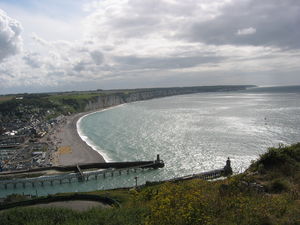
The sea, from Notre-Dame-de-Salut
- Panorama from Notre-Dame-de-Salut: Orientation table
- Pebble beach
- Cliffs
People associated with Fécamp
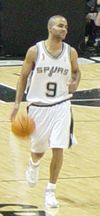
Tony Parker
- Remigius de Fécamp, First bishop of Lincoln
- Edward the Confessor, exiled to Fécamp.
- Wace, writer – stayed in Fécamp.
- Jean Accart, WWII fighter pilot – born in Fécamp.
- Guillaume de Volpiano, Religious reformer - buried in Fécamp in 1031
- Alexandre Legrand, industrialist, “rediscovered” Bénédictine
- Guy de Maupassant once lived here in Fécamp.
- Jean Lorrain, writer was born in Fécamp (9 August 1855)
- Tony Parker, French basketball player
- Richard 1 of Normandy (933-996)
- Pierre Carron (1932), sculptor and painter
- David Belle (1973), creator of Parkour.
- Bella Pochez, Resistance member, died in Auschwitz.
- Gustave Lambert, Explorer
- Paul Vasselin, Politician
- Jacques Mazoyhie, Ship owner
- René Legros, inventor, born in Fécamp.
- Fernand Le Grand, Independent radio pioneer
- Etienne Chicot, Comedian, born in Fécamp
- Philippe Porée-Kurrer (1954), writer
- Louis Levacher (1934-1983), sculptor and painter.
- Raoul Dufy (1877–1953), Fauvist painter
Twin towns
See also
References
External links
Communes of the Seine-Maritime department  |
|
Allouville-Bellefosse · Alvimare · Ambrumesnil · Amfreville-la-Mi-Voie · Amfreville-les-Champs · Anceaumeville · Ancourt · Ancourteville-sur-Héricourt · Ancretiéville-Saint-Victor · Ancretteville-sur-Mer · Angerville-Bailleul · Angerville-la-Martel · Angerville-l'Orcher · Angiens · Anglesqueville-l'Esneval · Anglesqueville-la-Bras-Long · Anneville-Ambourville · Anneville-sur-Scie · Annouville-Vilmesnil · Anquetierville · Anvéville · Ardouval · Argueil · Arques-la-Bataille · Assigny · Aubéguimont · Aubermesnil-aux-Érables · Aubermesnil-Beaumais · Auberville-la-Campagne · Auberville-la-Manuel · Auberville-la-Renault · Auffay · Aumale · Auppegard · Auquemesnil · Authieux-Ratiéville · Les Authieux-sur-le-Port-Saint-Ouen · Autigny · Autretot · Auvilliers · Auzebosc · Auzouville-Auberbosc · Auzouville-l'Esneval · Auzouville-sur-Ry · Auzouville-sur-Saâne · Avesnes-en-Bray · Avesnes-en-Val · Avremesnil · Bacqueville-en-Caux · Bailleul-Neuville · Baillolet · Bailly-en-Rivière · Baons-le-Comte · Bardouville · Barentin · Baromesnil · Bazinval · Beaubec-la-Rosière · Beaumont-le-Hareng · Beaurepaire · Beaussault · Beautot · Beauval-en-Caux · Beauvoir-en-Lyons · Bec-de-Mortagne · Belbeuf · Bellencombre · Bellengreville · Belleville-en-Caux · Belleville-sur-Mer · La Bellière · Belmesnil · Bénarville · Bénesville · Bennetot · Bénouville · Bermonville · Berneval-le-Grand · Bernières · Bertheauville · Bertreville · Bertreville-Saint-Ouen · Bertrimont · Berville · Berville-sur-Seine · Betteville · Beuzeville-la-Grenier · Beuzeville-la-Guérard · Beuzevillette · Bézancourt · Bierville · Bihorel · Biville-la-Baignarde · Biville-la-Rivière · Biville-sur-Mer · Blacqueville · Blainville-Crevon · Blangy-sur-Bresle · Blosseville · Le Bocasse · Bois-d'Ennebourg · Bois-Guilbert · Bois-Guillaume · Bois-Héroult · Bois-Himont · Bois-l'Évêque · Le Bois-Robert · Boissay · Bolbec · Bolleville · Bonsecours · Boos · Bordeaux-Saint-Clair · Bornambusc · Bosc-Bérenger · Bosc-Bordel · Bosc-Édeline · Bosc-Guérard-Saint-Adrien · Bosc-Hyons · Bosc-le-Hard · Bosc-Mesnil · Bosc-Roger-sur-Buchy · Bosville · Boudeville · Bouelles · La Bouille · Bourdainville · Le Bourg-Dun · Bourville · Bouville · Brachy · Bracquemont · Bracquetuit · Bradiancourt · Brametot · Bréauté · Brémontier-Merval · Bretteville-du-Grand-Caux · Bretteville-Saint-Laurent · Brunville · Buchy · Bully · Bures-en-Bray · Butot · Butot-Vénesville · Cailleville · Cailly · Callengeville · Calleville-les-Deux-Églises · Campneuseville · Canehan · Canouville · Canteleu · Canville-les-Deux-Églises · Cany-Barville · Carville-la-Folletière · Carville-Pot-de-Fer · Le Catelier · Catenay · Caudebec-en-Caux · Caudebec-lès-Elbeuf · Le Caule-Sainte-Beuve · Cauville-sur-Mer · Les Cent-Acres · La Cerlangue · La Chapelle-du-Bourgay · La Chapelle-Saint-Ouen · La Chapelle-sur-Dun · La Chaussée · Cideville · Clais · Clasville · Claville-Motteville · Cléon · Clères · Cleuville · Cléville · Cliponville · Colleville · Colmesnil-Manneville · Compainville · Conteville · Contremoulins · Cottévrard · Crasville-la-Mallet · Crasville-la-Rocquefort · Cressy · Criel-sur-Mer · La Crique · Criquebeuf-en-Caux · Criquetot-l'Esneval · Criquetot-le-Mauconduit · Criquetot-sur-Longueville · Criquetot-sur-Ouville · Criquiers · Critot · Croisy-sur-Andelle · Croixdalle · Croix-Mare · Cropus · Crosville-sur-Scie · Cuverville · Cuverville-sur-Yères · Cuy-Saint-Fiacre · Dampierre-en-Bray · Dampierre-Saint-Nicolas · Dancourt · Darnétal · Daubeuf-Serville · Dénestanville · Derchigny · Déville-lès-Rouen · Dieppe · Doudeauville · Doudeville · Douvrend · Drosay · Duclair · Écalles-Alix · Écrainville · Écretteville-lès-Baons · Écretteville-sur-Mer · Ectot-l'Auber · Ectot-lès-Baons · Elbeuf · Elbeuf-en-Bray · Elbeuf-sur-Andelle · Életot · Ellecourt · Émanville · Envermeu · Envronville · Épinay-sur-Duclair · Épouville · Épretot · Épreville · Ermenouville · Ernemont-la-Villette · Ernemont-sur-Buchy · Esclavelles · Eslettes · Esteville · Estouteville-Écalles · Étaimpuis · Étainhus · Étalleville · Étalondes · Étoutteville · Étretat · Eu · Fallencourt · Fauville-en-Caux · Fécamp · Ferrières-en-Bray · La Ferté-Saint-Samson · Fesques · La Feuillie · Flamanville · Flamets-Frétils · Flocques · La Folletière · Fongueusemare · Fontaine-en-Bray · Fontaine-la-Mallet · Fontaine-le-Bourg · Fontaine-le-Dun · Fontaine-sous-Préaux · La Fontelaye · Fontenay · Forges-les-Eaux · Le Fossé · Foucarmont · Foucart · Franqueville-Saint-Pierre · Fréauville · La Frénaye · Freneuse · Fresles · Fresnay-le-Long · Fresne-le-Plan · Fresnoy-Folny · Fresquiennes · Freulleville · Fréville · Frichemesnil · Froberville · Fry · Fultot · La Gaillarde · Gaillefontaine · Gainneville · Gancourt-Saint-Étienne · Ganzeville · Gerponville · Gerville · Glicourt · Goderville · Gommerville · Gonfreville-Caillot · Gonfreville-l'Orcher · Gonnetot · Gonneville-la-Mallet · Gonneville-sur-Scie · Gonzeville · Gouchaupre · Goupillières · Gournay-en-Bray · Gouy · Graimbouville · Grainville-la-Teinturière · Grainville-sur-Ry · Grainville-Ymauville · Grand-Camp · Grand-Couronne · Grandcourt · Les Grandes-Ventes · Le Grand-Quevilly · Graval · Grèges · Grémonville · Greny · Greuville · Grigneuseville · Gruchet-le-Valasse · Gruchet-Saint-Siméon · Grugny · Grumesnil · Guerville · Gueures · Gueutteville · Gueutteville-les-Grès · Guilmécourt · La Hallotière · Le Hanouard · Harcanville · Harfleur · Hattenville · Haucourt · Haudricourt · Haussez · Hautot-l'Auvray · Hautot-le-Vatois · Hautot-Saint-Sulpice · Hautot-sur-Mer · Hautot-sur-Seine · Le Havre · La Haye · Héberville · Hénouville · Héricourt-en-Caux · Hermanville · Hermeville · Le Héron · Héronchelles · Heugleville-sur-Scie · Heuqueville · Heurteauville · Hodeng-au-Bosc · Hodeng-Hodenger · Houdetot · Le Houlme · Houppeville · Houquetot · La Houssaye-Béranger · Hugleville-en-Caux · Les Ifs · Illois · Imbleville · Incheville · Ingouville · Intraville · Isneauville · Jumièges · Lamberville · Lammerville · Landes-Vieilles-et-Neuves · Lanquetot · Lestanville · Lillebonne · Limésy · Limpiville · Lindebeuf · Lintot · Lintot-les-Bois · Les Loges · La Londe · Londinières · Longmesnil · Longroy · Longueil · Longuerue · Longueville-sur-Scie · Louvetot · Lucy · Luneray · La Mailleraye-sur-Seine · Malaunay · Malleville-les-Grès · Manéglise · Manéhouville · Maniquerville · Manneville-ès-Plains · Manneville-la-Goupil · Mannevillette · Maromme · Marques · Martainville-Épreville · Martigny · Martin-Église · Massy · Mathonville · Maucomble · Maulévrier-Sainte-Gertrude · Mauny · Mauquenchy · Mélamare · Melleville · Ménerval · Ménonval · Mentheville · Mésangueville · Mesnières-en-Bray · Le Mesnil-Durdent · Le Mesnil-Esnard · Mesnil-Follemprise · Le Mesnil-Lieubray · Mesnil-Mauger · Mesnil-Panneville · Mesnil-Raoul · Le Mesnil-Réaume · Le Mesnil-sous-Jumièges · Meulers · Millebosc · Mirville · Molagnies · Monchaux-Soreng · Monchy-sur-Eu · Mont-Cauvaire · Mont-de-l'If · Mont-Saint-Aignan · Montérolier · Montigny · Montivilliers · Montmain · Montreuil-en-Caux · Montroty · Montville · Morgny-la-Pommeraye · Morienne · Mortemer · Morville-sur-Andelle · Motteville · Moulineaux · Muchedent · Nesle-Hodeng · Nesle-Normandeuse · Neufbosc · Neufchâtel-en-Bray · Neuf-Marché · La Neuville-Chant-d'Oisel · Neuville-Ferrières · Néville · Nointot · Nolléval · Normanville · Norville · Notre-Dame-d'Aliermont · Notre-Dame-de-Bliquetuit · Notre-Dame-de-Bondeville · Notre-Dame-de-Gravenchon · Notre-Dame-du-Bec · Notre-Dame-du-Parc · Nullemont · Ocqueville · Octeville-sur-Mer · Offranville · Oherville · Oissel · Omonville · Orival · Osmoy-Saint-Valery · Ouainville · Oudalle · Ourville-en-Caux · Ouville-l'Abbaye · Ouville-la-Rivière · Paluel · Parc-d'Anxtot · Pavilly · Penly · Petit-Couronne · Le Petit-Quevilly · Petiville · Pierrecourt · Pierrefiques · Pierreval · Pissy-Pôville · Pleine-Sève · Pommereux · Pommeréval · Ponts-et-Marais · La Poterie-Cap-d'Antifer · Préaux · Prétot-Vicquemare · Preuseville · Puisenval · Quevillon · Quévreville-la-Poterie · Quiberville · Quièvrecourt · Quincampoix · Raffetot · Rainfreville · Réalcamp · Rebets · La Remuée · Rétonval · Reuville · Ricarville · Ricarville-du-Val · Richemont · Rieux · Riville · Robertot · Rocquefort · Rocquemont · Rogerville · Rolleville · Roncherolles-en-Bray · Roncherolles-sur-le-Vivier · Ronchois · Rosay · Rouen · Roumare · Routes · Rouville · Rouvray-Catillon · Rouxmesnil-Bouteilles · Royville · La Rue-Saint-Pierre · Ry · Saâne-Saint-Just · Sahurs · Sainneville · Saint-Aignan-sur-Ry · Saint-André-sur-Cailly · Saint-Antoine-la-Forêt · Saint-Arnoult · Saint-Aubin-Celloville · Saint-Aubin-de-Crétot · Saint-Aubin-Épinay · Saint-Aubin-le-Cauf · Saint-Aubin-lès-Elbeuf · Saint-Aubin-Routot · Saint-Aubin-sur-Mer · Saint-Aubin-sur-Scie · Saint-Clair-sur-les-Monts · Saint-Crespin · Saint-Denis-d'Aclon · Saint-Denis-le-Thiboult · Saint-Denis-sur-Scie · Sainte-Adresse · Sainte-Agathe-d'Aliermont · Sainte-Austreberthe · Sainte-Beuve-en-Rivière · Sainte-Colombe · Sainte-Croix-sur-Buchy · Sainte-Foy · Sainte-Geneviève · Sainte-Hélène-Bondeville · Sainte-Marguerite-sur-Duclair · Sainte-Marguerite-sur-Fauville · Sainte-Marguerite-sur-Mer · Sainte-Marie-au-Bosc · Sainte-Marie-des-Champs · Saint-Étienne-du-Rouvray · Saint-Eustache-la-Forêt · Saint-Georges-sur-Fontaine · Saint-Germain-des-Essourts · Saint-Germain-d'Étables · Saint-Germain-sous-Cailly · Saint-Germain-sur-Eaulne · Saint-Gilles-de-Crétot · Saint-Gilles-de-la-Neuville · Saint-Hellier · Saint-Honoré · Saint-Jacques-d'Aliermont · Saint-Jacques-sur-Darnétal · Saint-Jean-de-Folleville · Saint-Jean-de-la-Neuville · Saint-Jean-du-Cardonnay · Saint-Jouin-Bruneval · Saint-Laurent-de-Brèvedent · Saint-Laurent-en-Caux · Saint-Léger-aux-Bois · Saint-Léger-du-Bourg-Denis · Saint-Léonard · Saint-Maclou-de-Folleville · Saint-Maclou-la-Brière · Saint-Mards · Saint-Martin-au-Bosc · Saint-Martin-aux-Arbres · Saint-Martin-aux-Buneaux · Saint-Martin-de-Boscherville · Saint-Martin-du-Bec · Saint-Martin-du-Manoir · Saint-Martin-du-Vivier · Saint-Martin-en-Campagne · Saint-Martin-le-Gaillard · Saint-Martin-l'Hortier · Saint-Martin-Osmonville · Saint-Maurice-d'Ételan · Saint-Michel-d'Halescourt · Saint-Nicolas-d'Aliermont · Saint-Nicolas-de-Bliquetuit · Saint-Nicolas-de-la-Haie · Saint-Nicolas-de-la-Taille · Saint-Ouen-du-Breuil · Saint-Ouen-le-Mauger · Saint-Ouen-sous-Bailly · Saint-Paër · Saint-Pierre-Bénouville · Saint-Pierre-de-Manneville · Saint-Pierre-des-Jonquières · Saint-Pierre-de-Varengeville · Saint-Pierre-en-Port · Saint-Pierre-en-Val · Saint-Pierre-Lavis · Saint-Pierre-lès-Elbeuf · Saint-Pierre-le-Vieux · Saint-Pierre-le-Viger · Saint-Quentin-au-Bosc · Saint-Rémy-Boscrocourt · Saint-Riquier-en-Rivière · Saint-Riquier-ès-Plains · Saint-Romain-de-Colbosc · Saint-Saëns · Saint-Saire · Saint-Sauveur-d'Émalleville · Saint-Sylvain · Saint-Vaast-d'Équiqueville · Saint-Vaast-Dieppedalle · Saint-Vaast-du-Val · Saint-Valery-en-Caux · Saint-Victor-l'Abbaye · Saint-Vigor-d'Ymonville · Saint-Vincent-Cramesnil · Saint-Wandrille-Rançon · Sandouville · Sassetot-le-Malgardé · Sassetot-le-Mauconduit · Sasseville · Sauchay · Saumont-la-Poterie · Sauqueville · Saussay · Sausseuzemare-en-Caux · Senneville-sur-Fécamp · Sept-Meules · Serqueux · Servaville-Salmonville · Sévis · Sierville · Sigy-en-Bray · Smermesnil · Sommery · Sommesnil · Sorquainville · Sotteville-lès-Rouen · Sotteville-sous-le-Val · Sotteville-sur-Mer · Tancarville · Thérouldeville · Theuville-aux-Maillots · Thiergeville · Thiétreville · Thil-Manneville · Le Thil-Riberpré · Thiouville · Le Tilleul · Tocqueville-en-Caux · Tocqueville-les-Murs · Tocqueville-sur-Eu · Torcy-le-Grand · Torcy-le-Petit · Le Torp-Mesnil · Tôtes · Touffreville-la-Cable · Touffreville-la-Corbeline · Touffreville-sur-Eu · Tourville-la-Chapelle · Tourville-la-Rivière · Tourville-les-Ifs · Tourville-sur-Arques · Toussaint · Le Trait · Trémauville · Le Tréport · La Trinité-du-Mont · Triquerville · Les Trois-Pierres · Trouville · Turretot · Val-de-la-Haye · Val-de-Saâne · Valliquerville · Valmont · Varengeville-sur-Mer · Varneville-Bretteville · Vassonville · Vatierville · Vattetot-sous-Beaumont · Vattetot-sur-Mer · Vatteville-la-Rue · La Vaupalière · Veauville-lès-Baons · Veauville-lès-Quelles · Vénestanville · Ventes-Saint-Rémy · Vergetot · Veules-les-Roses · Veulettes-sur-Mer · Vibeuf · Vieux-Manoir · Vieux-Rouen-sur-Bresle · La Vieux-Rue · Villainville · Villequier · Villers-Écalles · Villers-sous-Foucarmont · Villy-sur-Yères · Vinnemerville · Virville · Vittefleur · Wanchy-Capval · Yainville · Yébleron · Yerville · Ymare · Yport · Ypreville-Biville · Yquebeuf · Yvecrique · Yvetot · Yville-sur-Seine
|
|
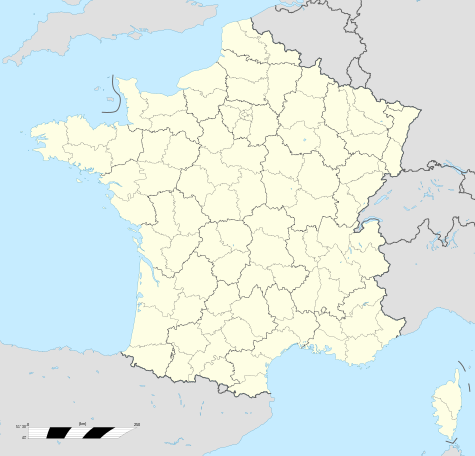
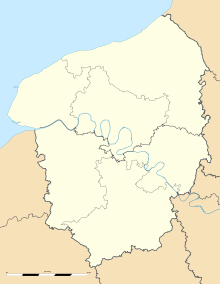





 Rheinfelden, Germany
Rheinfelden, Germany.svg.png) Mouscron, Belgium
Mouscron, Belgium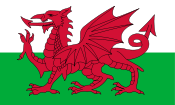 Vale of Glamorgan, Wales
Vale of Glamorgan, Wales